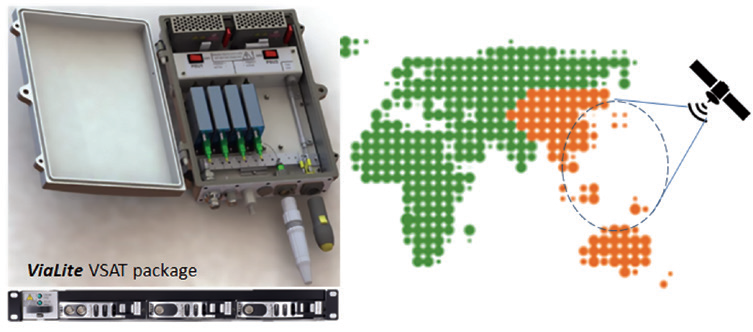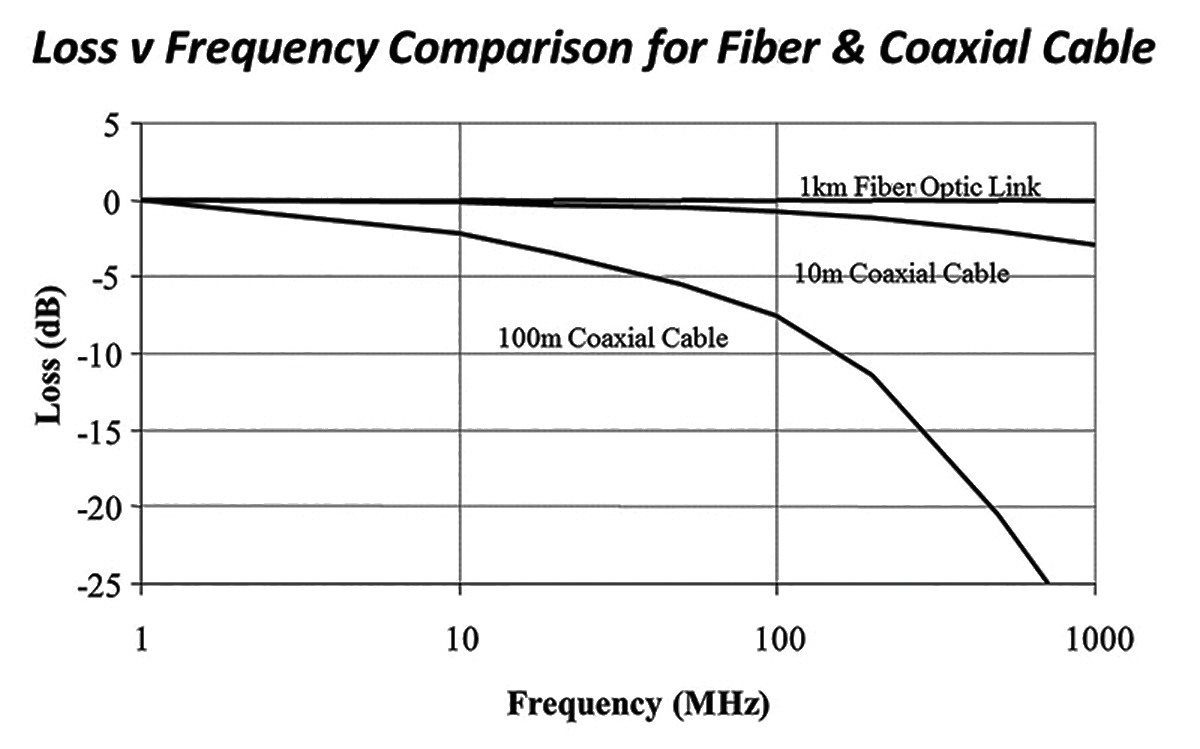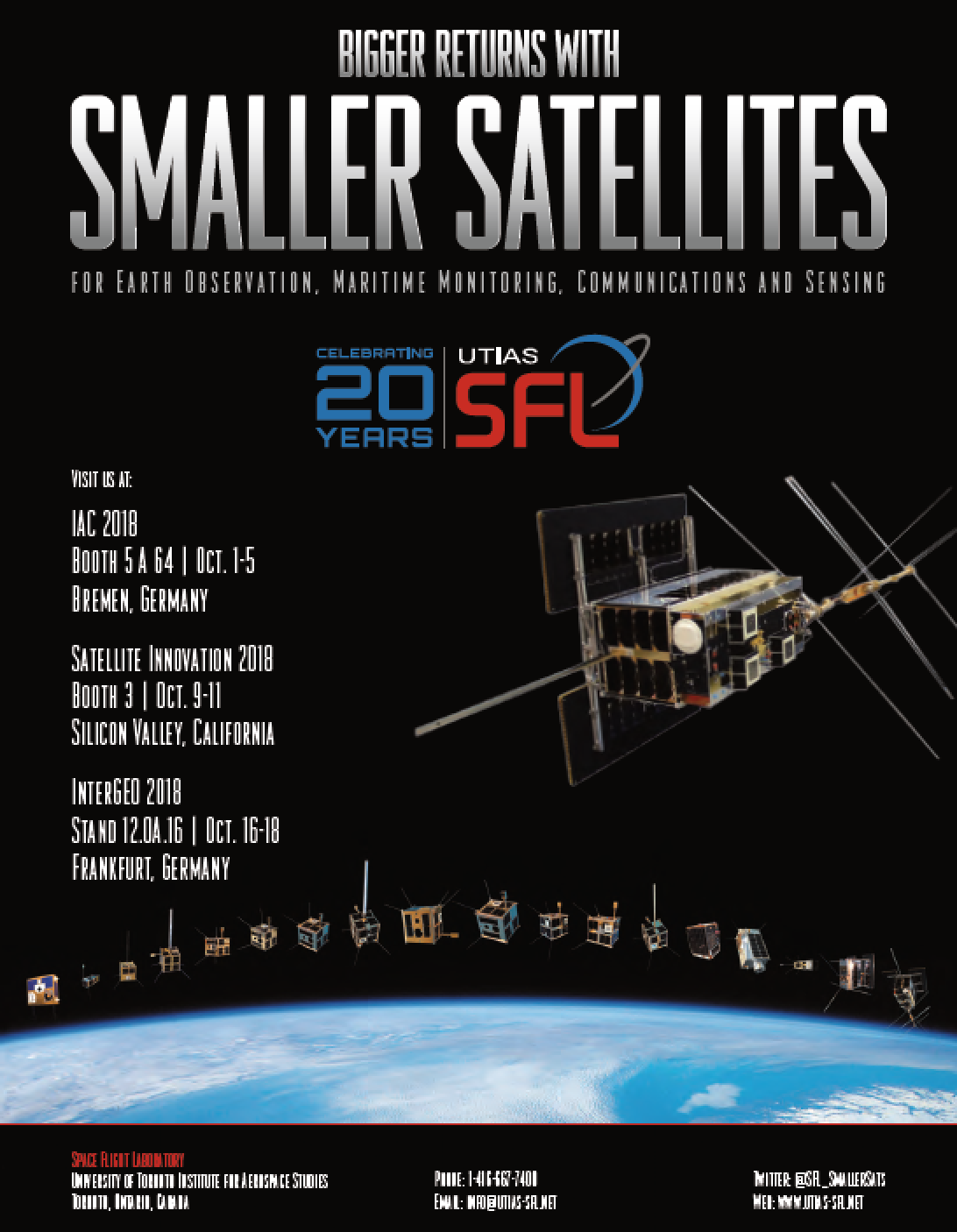Being born in the 1960’s, I’ve always felt miniaturization is cool. That feeling hasn’t always been shared by my three lovely daughters, taking them round a model village on a nice summer’s day looking at the amazing miniature railway junction box. Or, closer to their interest, marveling at how many thousands of milliamps per hour they can now squeeze into a smartphone. They just don’t get it and look at me like I’m some boggle eyed alien*.

The ViaLite VSAT package.
I’ve also felt that the satellite communications (SATCOM) industry has always been cool, as well; and the demand for miniaturization has pushed a new wave of innovation, particularly in relation to the latest ambitious plans to launch thousands of Low Earth Orbit (LEO) satellites that range in size from the small through to the micro and nanosatellite. This makes total sense — smaller, lighter satellites cost considerably less to launch and maintain in active flight-mode.
Similarly, on the ground side of the satellite business, miniaturization is a key innovation enabler. Consumer terminals have been dramatically reduced in size — a good example being GPS / GNSS navigation receivers which are now ubiquitous in many handheld and small devices, such as my daughters’ smartphones!
My company develops and manufactures a product which is based on RF-over-Fiber technology, also a ground based application. The RF-over-Fiber technology, in basic terms, is a clever RF coax replacement solution but offers many more additional benefits.
The benefits include: extremely low loss compared to RF coax, inherent immunity to EMI, very wide frequency bandwidth (GHz’s), electrical isolation including lightning. These dividends make RF ideal for application into the SATCOM industry, particularly where control stations are connected to a local antenna farm (within one kilometer) or at a diverse remote location, which could be tens or even hundreds of kilometers away. Most teleport operators have moved to this technology for all RF links over 80 meters in length (approximate) or have high throughput-high bandwidth link requirements.
Looking at the miniaturization theme specifically, if a simple fiber optic patch cable is compared to a high frequency coax cable, the fiber optic cable is as much as nine times the cross-sectional area smaller than the coax. Already, savings have been made in space and weight; however, there are more tricks up the RF-over-Fiber sleeve.
RF-over-Fiber can also employ multiplexing technology by using different light colors down the same fiber. The multiplexed channels have high isolation and can be bi-directional. This reduces fiber needs (and leasing costs, if this is long distance) and delivers huge savings on space and weight.
In the ViaLite RF-over-Fiber range, the CWDM products support as many as 16 multiplexed channels and the DWDM product supports up to 96 multiplexed channels. The space saving ratio from a fiber optic patch cable to a high frequency coax cable in cross sectional area goes to 144x for CWDM and 864x for a fully populated DWDM link**.

Another trend in the SATCOM industry has been the move to higher frequency communications, from L- to C- to Ku- and Ka-bands. The trend is to make the antenna dishes physically smaller. Very Small Aperture Terminals (VSAT) typically use dishes less than 4 meters in diameter and are in widespread use today where space is often limited, such as in maritime and mobile transport environments. Many of the new LEO satellite systems, e.g., OneWeb, SpaceX or LeoSat, use Ku- or Ka-bands and need smaller (tracking) or VSAT-type antenna.
ViaLite has also been tracking this move in the market place and has responded with new turnkey solutions that are more appropriate to this application. While the company continues to supply “traditional” 3U, 19 inch rack systems for the larger teleports or broadcast TV gateways, for smaller or temporary deployments, new form factors and outside enclosures have been required.
Particularly in dense urban cities in Asia, VSAT connection packages become a real necessity, often to connect antenna on extremely tall buildings to lower level floors — or even basements. An RF-over-Fiber VSAT package would typically be comprised of an outdoor unit to convert the RF signals near the dish (and provide power for BUC / Downlink converters) and an indoor unit to convert optical back into RF closer to the modem.

The ViaLite VSAT package is made up of the outdoor unit — the ODE-A4, which contains up to 4 channels and LNB powering options, and a slim-line 1U indoor unit, which again handles up to 4 channels with additional options that include dual redundant power supplies, alarms, SNMP, and so on. The complete ODE-A4 and 1U solution packs a lot of features into a small volume, making it appropriate for smaller satellite dish installations.
For even smaller or temporary mobile installation — that are popular in the TV and media broadcast industry — the ViaLite Blue2 RF-over-Fiber link was developed as a dual-link solution which can be set up as a dual transmitter (e.g., two downlinks from a dish), dual receivers or a transceiver (transmit and receive). It comes in a small form factor enclosure that is just 350 cubic centimeters. The maximum power used is also 4 watts, so the unit is able to be convention-cooled and does not need ventilation slots or fan assisted cooling. This makes the Blue2 ideal for small or mobile deployment and the product can easily be integrated into another enclosure or as a “throw-down” box. As a complete solution, the Blue2 units can be used in pairs or used in combination with the other ViaLite products.

Finally, coming back to my earlier comments about miniaturization and the younger members of Generation Z (internet users from the early years), while attending conferences and exhibitions this year, I was actually pleasantly impressed with how many universities and graduate teams are developing their own smallsat projects — tiny, almost handheld, satellites weigh somewhere between 1 and 10 kg. Yes, yet another step change in miniaturization that is promoting further innovation in the radio link, in the sky and the ground. Great news for the future and more interesting work to do for ViaLite.
www.vialite.com/

* At ViaLite, we like aliens so much we have our one called Barry; he helps our customers get the most out of RF-over Fiber technology
** Based on 2.8 mm diameter Fiber Optic cable and 8.25 mm diameter RG143 RF coax, and the number of CWDM / DWDM channels supported on ViaLite RF-over Fiber solution
Richard is the Global Director of Sales and Business Development for ViaLite Communications a leading manufacturer of RF-over-Fiber solutions, and has worked more than 30 years in the wireless communications infrastructure, audio and test and measurement markets.


